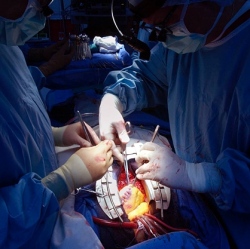
Brigham and Women’s Hospital (BWH) has made headway in fabricating blood vessels using a three-dimensional (3D) bioprinting technique. They have a unique strategy for vascularization of hydrogel constructs that combine advances in 3D bioprinting technology and biomaterials.
The researchers first used a 3D bioprinter to make an agarose (naturally derived sugar-based molecule) fiber template to serve as the mold for the blood vessels. They then covered the mold with a gelatin-like substance called hydrogel, forming a cast over the mold which was then reinforced via photocrosslinks. Artificial blood vessels are created using hydrogel constructs that combine advances in 3-D bioprinting technology and biomaterials.
"Our approach involves the printing of agarose fibers that become the blood vessel channels. But what is unique about our approach is that the fiber templates we printed are strong enough that we can physically remove them to make the channels," said Khademhosseini. "This prevents having to dissolve these template layers, which may not be so good for the cells that are entrapped in the surrounding gel."
Khademhosseini and his team were able to construct microchannel networks exhibiting various architectural features. They were also able to successfully embed these functional and perfusable microchannels inside a wide range of commonly used hydrogels, such as methacrylated gelatin or poly(ethylene glycol)-based hydrogels at different concentrations.
